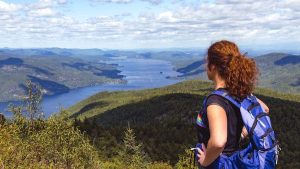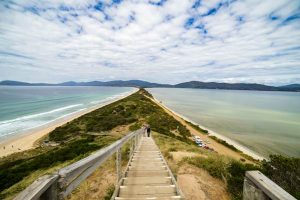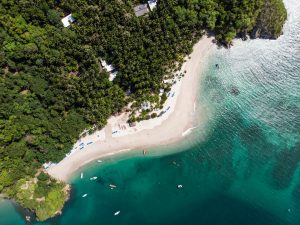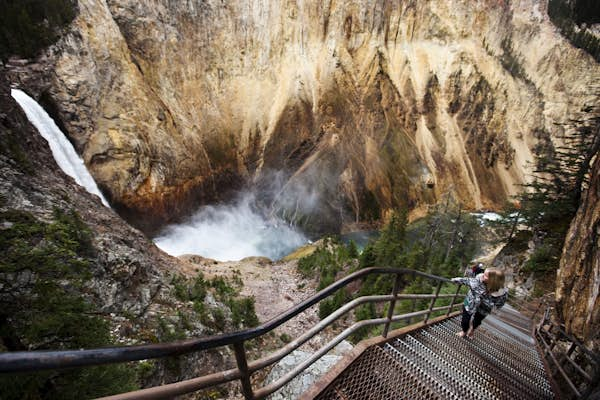
Exploring Yellowstone National Park’s geysers, waterfalls, mountains and canyons by foot is easily the best way to see this magnificent park. It’s also the best way to lose the crowds. Only 10% of Yellowstone visitors leave the boardwalks during their visit and only half of those venture more than a mile from their car. That leaves an awful lot of exploring for the rest of us.
Step into the Yellowstone backcountry and you are entering a wild, primeval landscape populated by wolf packs, bison herds and roving grizzly bears, and alive with raging geysers, thundering waterfalls and steaming hot springs. The frisson of excitement that comes from walking into the wild makes your engagement with the landscape all the more intense, and exploring a backcountry thermal basin away from the crowds seems to magnify the mystery of Yellowstone’s thermal wonders.
With 900-plus miles of maintained hiking trails in Yellowstone National Park, it’s hard to know where to start. These are our favorite hikes.
Make the most out of every adventure with help from our weekly newsletter delivered to your inbox.
1. Mt Washburn
The park’s most popular trail
6.4 miles round trip, 4 hours, moderate
If Yellowstone has one classic hike it’s this 1400ft climb to the Washburn fire lookout tower, for fine views over an incredible three-quarters of Yellowstone. What really elevates this hike to a park classic is not just the view but what it represents – essentially a collapsed crater created by the Yellowstone supervolcano 640,000 years ago. Information boards help wrap your head around the Earth-shaping geology on show.
In September and October keep an eye open for grizzlies, who come here to feast on whitebark pine nuts – the parks service advises avoiding the trail at this time. Over 10,000 people make this hike each year, so get here early to grab a parking spot at Dunraven Pass.
2. South Rim Trail
Canyon views away from the crowds
6 miles round trip, 4 hours, easy
Most people admire the spectacular Grand Canyon of the Yellowstone from a series of car park adjacent viewpoints, but our favorite way of getting the bigger picture is to link them together along the South Rim Trail.
Start off with classic views of the Upper (109ft) and Lower (308ft) falls from Uncle Tom’s trail, then quickly lose the crowds on an easy stroll along the canyon rim to more classic views at Artist Point and then Point Sublime. Each viewpoint offers a different perspective on the incredible canyon. A 1.5-mile extension then takes you to Ribbon Lake for a good chance of spotting moose, before heading back to your car.
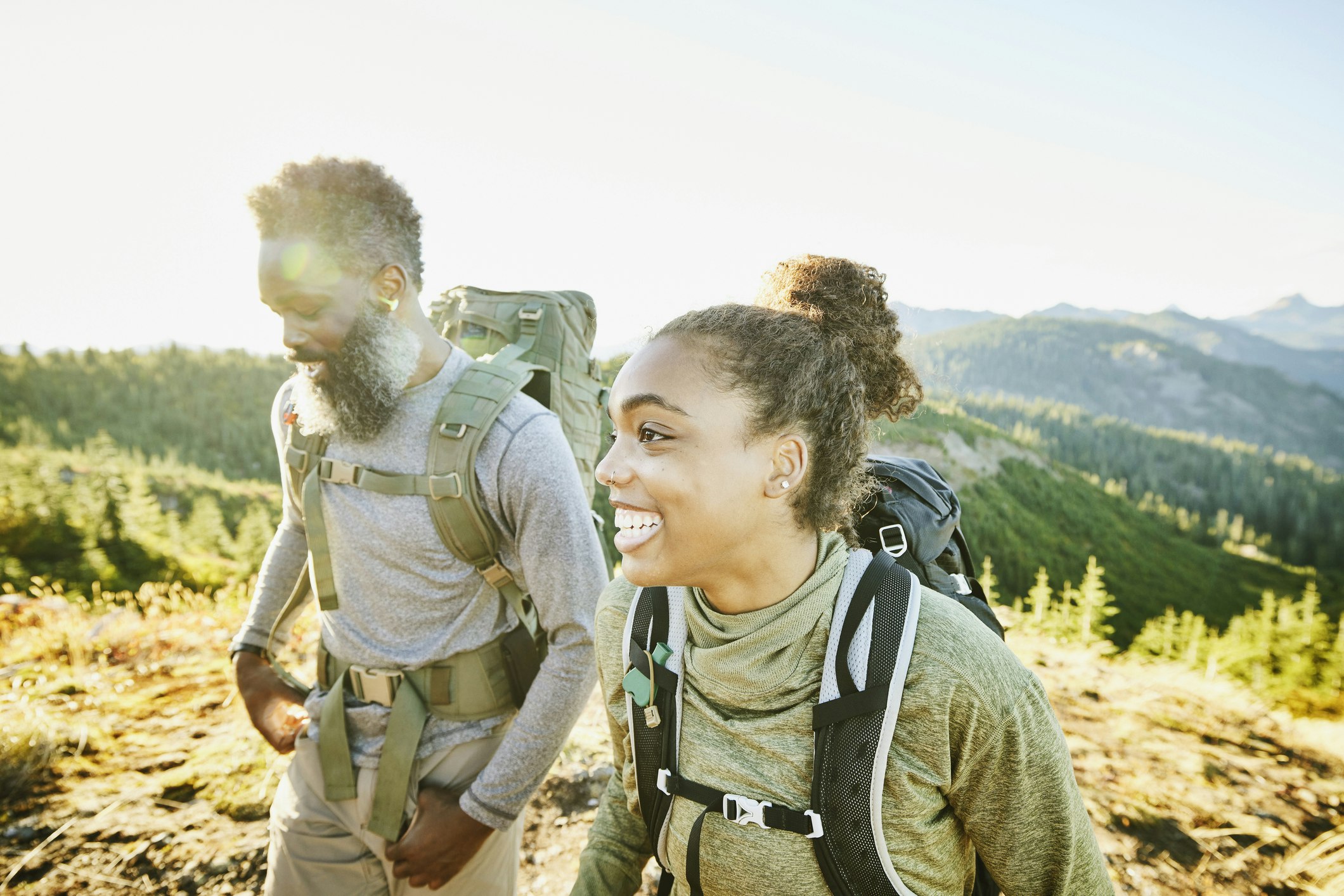 A multi-day hike through Yellowstone is the perfect family vacation © Thomas Barwick / Getty Images
A multi-day hike through Yellowstone is the perfect family vacation © Thomas Barwick / Getty Images
3. Fossil Forest Trail
Off-trail exploration to a geologic wonder
3.5 miles round trip, 2.5-3.5 hours, easy
This off-trail hike in the northern part of the park is a must for amateur geologists, climbing steeply up Specimen Ridge to the remains of several petrified trees. The trail is unmaintained, so harder to follow than most of the parks’ other trails, and the trailhead is unnamed, adding to the feeling that you are hiking a park secret.
The forests here were buried in ash 50 million years ago, preserving everything from giant redwoods to tropical avocado and breadfruit trees, with several ancient petrified forests even stacked atop older petrified forests. The views of the surrounding Lamar Valley are superb and you might well hear the howling of wolves early in the morning.
4. Bunsen Peak
Excellent views of the northern park
4.2 miles round trip, 2.5 hours, moderate
This popular half-day hike switchbacks steeply up the side of Bunsen Peak, gaining a hefty 1300 ft to offer fabulous panoramas of Mammoth, Swan Lake Flat and the muscular Gallatin Range. Bunsen Peak is actually an ancient lava plug, whose surrounding walls have largely eroded away, so you are in effect climbing up the inside of a former volcano.
As you near the peak’s three summits you’ll score big views of Electric Peak (10,992ft), one of the largest peaks in the Gallatin Range. Enter your name in the logbook and head to the easternmost summit for fine south-facing views. One tip: try to do this hike early in the day to avoid the frequent afternoon thunderstorms.
If the name Bunsen sounds familiar, the peak is named after the German scientist whose pioneering theories on the inner workings of Icelandic geysers influenced early Yellowstone hydrothermal research. And, yes, the Bunsen burner was named after him.
5. Heart Lake
Remote backcountry overnighter
16 miles round trip, 2-3 days, moderate-difficult
For an overnight backpacking adventure that packs a lot into a single weekend, it’s hard to beat Heart Lake. The trail passes fumaroles, boiling hot pots and the impressive Rustic Geyser, before wrapping up your first day at one of a half-dozen lakeshore backcountry campsites (reservations required). Bring a fishing rod.
The next morning fit hikers can make the epic 2800 ft climb up past talus slopes and snow fields to reach the 10,308 ft summit of Mt Sheridan, whose fire lookout offers a 360-degree panorama over Yellowstone Lake to the north and the saw-toothed Teton range to the south. Spend a second idyllic night listening to the songs of the grebes and the crackling of your campfire, before heading back.
July to October are the only feasible months for this trek. Keep an eye open for grizzlies at any time, but particularly early in the season.
 The incredible sight of Morning Glory Pool is definitely worth a detour © Carol Polich / Lonely Planet
The incredible sight of Morning Glory Pool is definitely worth a detour © Carol Polich / Lonely Planet
6. Old Faithful & Observation Hill
Hike through the world’s densest collection of geysers
5 miles round trip, 3 hours, easy
This understandably popular trail takes you around the park’s popular Upper Geyser Basin, past a spectacular array of 150 geysers, including Beehive and Grand, two of the tallest geysers in the park, and Castle Geyser, the oldest in the region at over 15,000 years old. Spectacular Riverside Geyser erupts diagonally into the nearby Firehole River. Get predicted times for the biggest geysers at the visitor center and time your hike accordingly.
There are lots of potential route options, but for the fullest picture head up to Observation Hill for a crowd-free alternative overview of Old Faithful, then follow the boardwalk out to the exquisite Morning Glory Pool, returning to Old Faithful Inn via the main paved trail. The route is fully accessible, though wheelchair users may need some assistance on the uphill section to Observation Hill.
7. Bechler River Trail
The park’s premier multi-day trek
33 miles round trip, 4 days, moderate
Yellowstone’s southwestern Bechler Corner is the remotest and least-visited corner of the park. It is a much-talked-about but little-visited landscape of hidden waterfalls, thigh-deep river fords and mosquitoes the size of small birds. The long drive here on unpaved roads deters all but the hardiest hikers.
Day one takes you through the boggy Bechler Meadows (bring sandals for this and the multiple river crossings) to the mouth of the Bechler River Canyon. Day two takes you past hillsides of raspberries, thimbleberries and cloudberries to a series of spectacular waterfalls – Colonnade, Iris and Ragged to name just three. Day three brings you to Ferris Fork and Yellowstone’s most hallowed backcountry hot soak – a waist-high, 40-foot-wide five-star pool nicknamed ‘Mr Bubbles’.
From here it’s a long day back south to the trailhead. Some people continue north to Shoshone Lake or Old Faithful, which makes for an awesome trek if you can arrange the transport or find a friend to swap car keys with halfway through the trek.
Top tips for hiking in Yellowstone National Park
- Don’t hike alone
- Carry bear spray
- Bring a hard-copy map and a fully-charged phone with mapping apps
- Always pack snacks, water, a head torch and a rain jacket
- Hike at dawn and dusk for the best chance of spotting wildlife
- Check on the status of your proposed trail at a backcountry office before setting off

